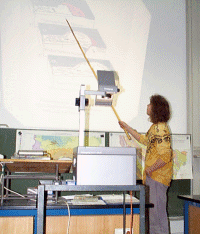
Abstract
![]()

![]()
In eastern Slovakia and southeast Poland, the Outer Carpathians form a
fold-and-thrust belt of considerable NE directed displacement. It
mainly consists of deformed Cretaceous-Tertiary deep-water clastics,
and can be divided into an imbricate stack of five major supracrustal
nappes.
We have used an extensive reflection seismic, surface geological and
drillhole data base to constrain the deformed geometry of the two
uppermost and southernmost allochthonous units: the Magura and Dukla
nappes. A retro-deformable cross section shows that both are detached
from their Mesozoic substrata along a single, large décollement
at about 5-7 km depth. The rear and frontal parts of the Magura nappe
show steep imbricate fan geometries, while the central part has a
duplex structure with long thrust horses. To the NE, the Dukla nappe is
a collage of imbricate slices, and is separated from the subjacent
Silesian nappe by a large thrust flat.
Computer-aided reverse modelling of deformation reveals that the Magura
nappe was horizontally shortened by at least 80 km, and the Dukla nappe
by about 20 km in NE-SW direction. Together with previously published
estimates of shortening in the Silesian, Sub-Silesian and Skole nappes,
the total orogenic contraction in the NE Outer Carpathians is at least
230 km. This shortening was accumulated between the Middle Oligocene
and the Middle Miocene.
Only part of the shortening can be balanced against contemporaneous back-arc extension and eastward extrusion of rock masses from the Eastern Alps. Our data and interpretations suggest that large volumes of mostly thinned continental crust originally underlying the Outer Carpathian flysch have either been subducted to the Earth´s mantle, or contributed to the build-up of crustal roots in the Alpine-Carpathian orogenic belt.
![]()